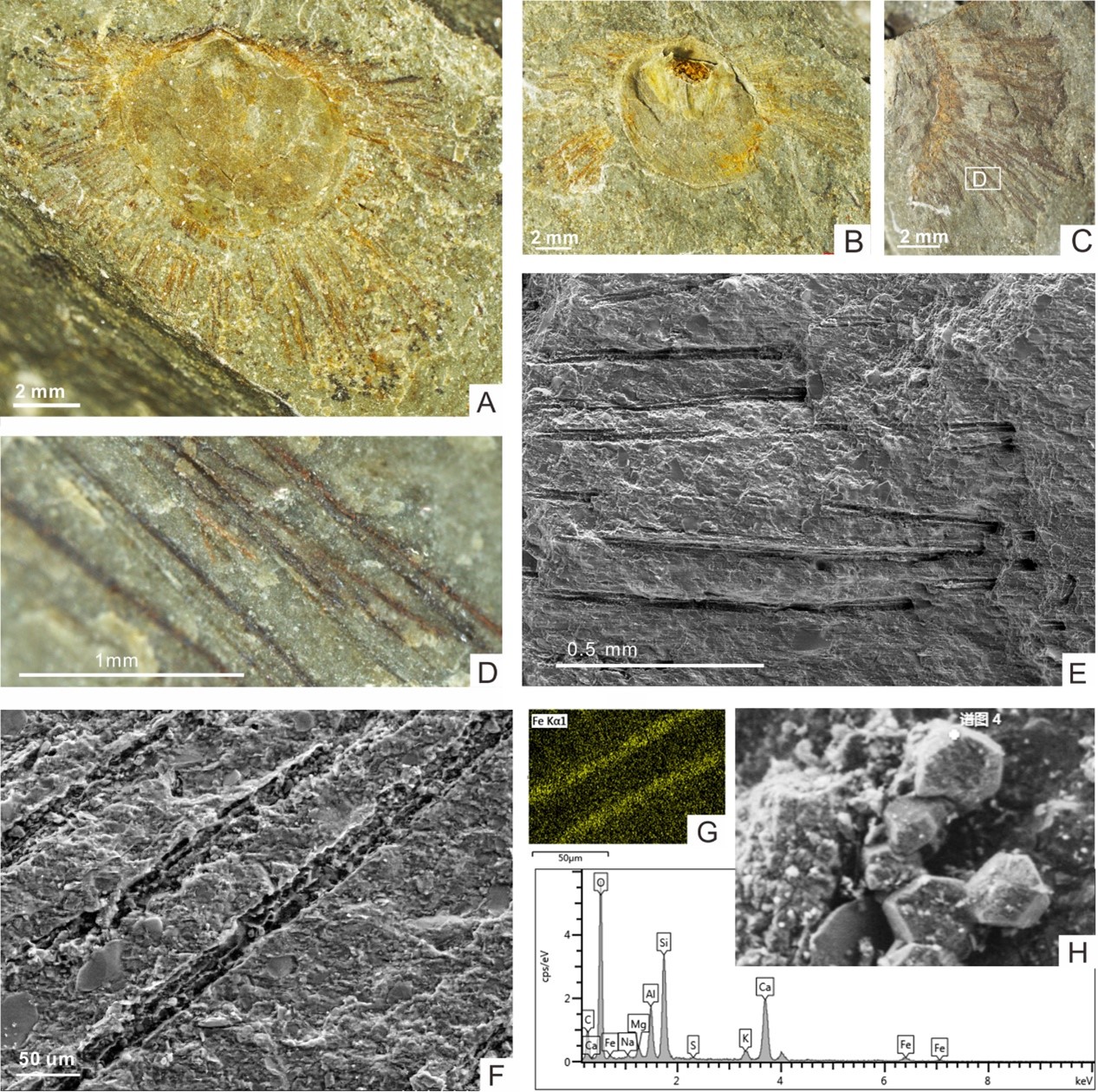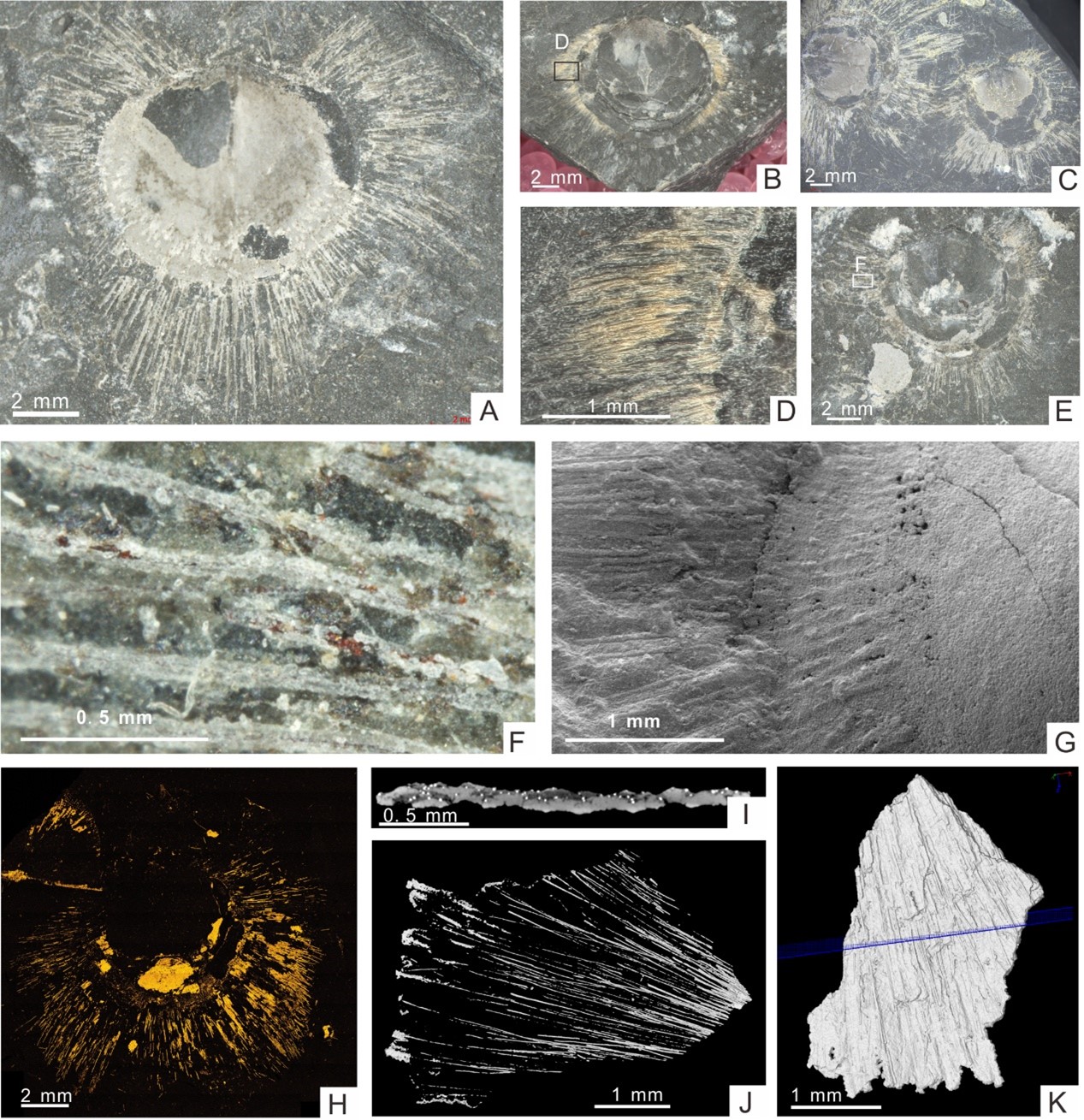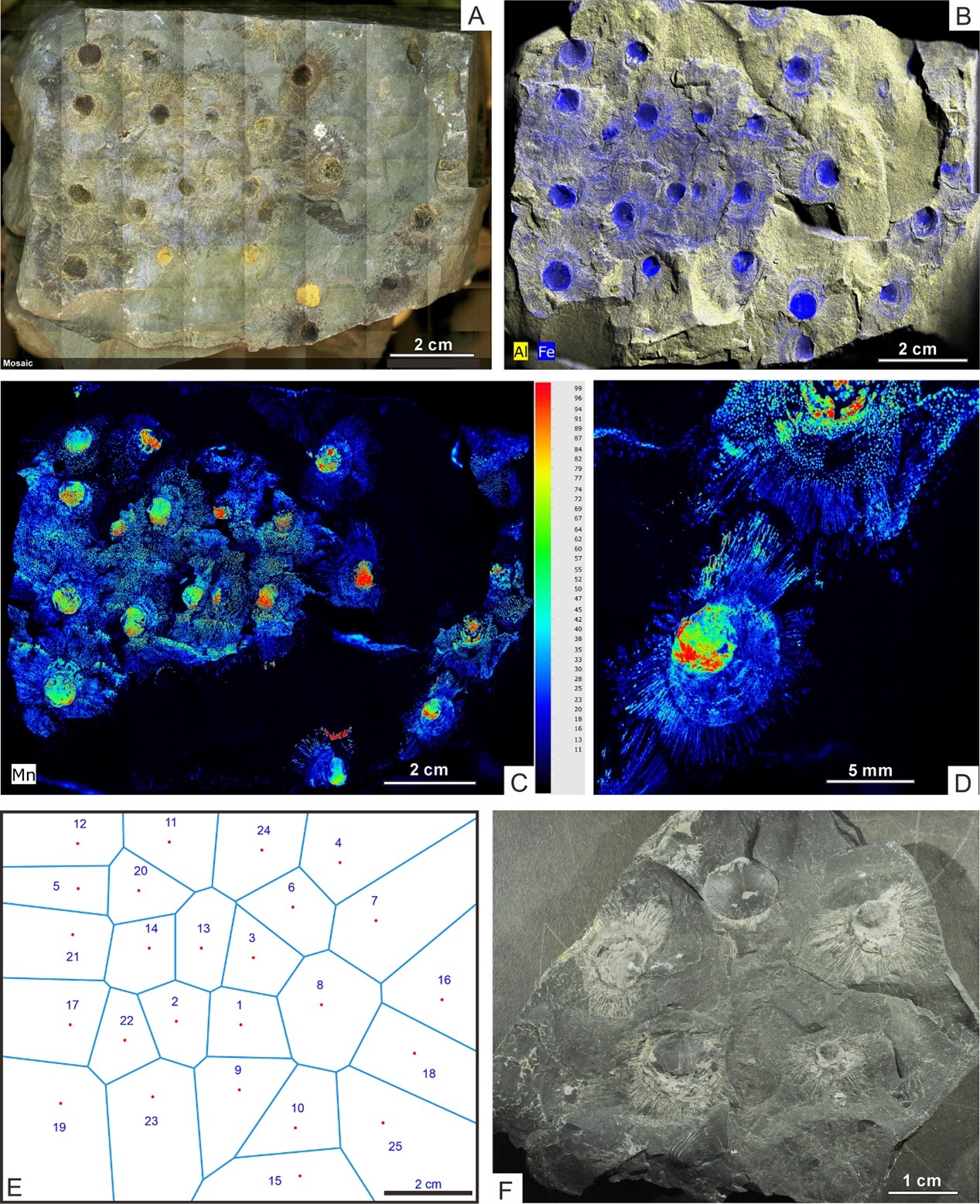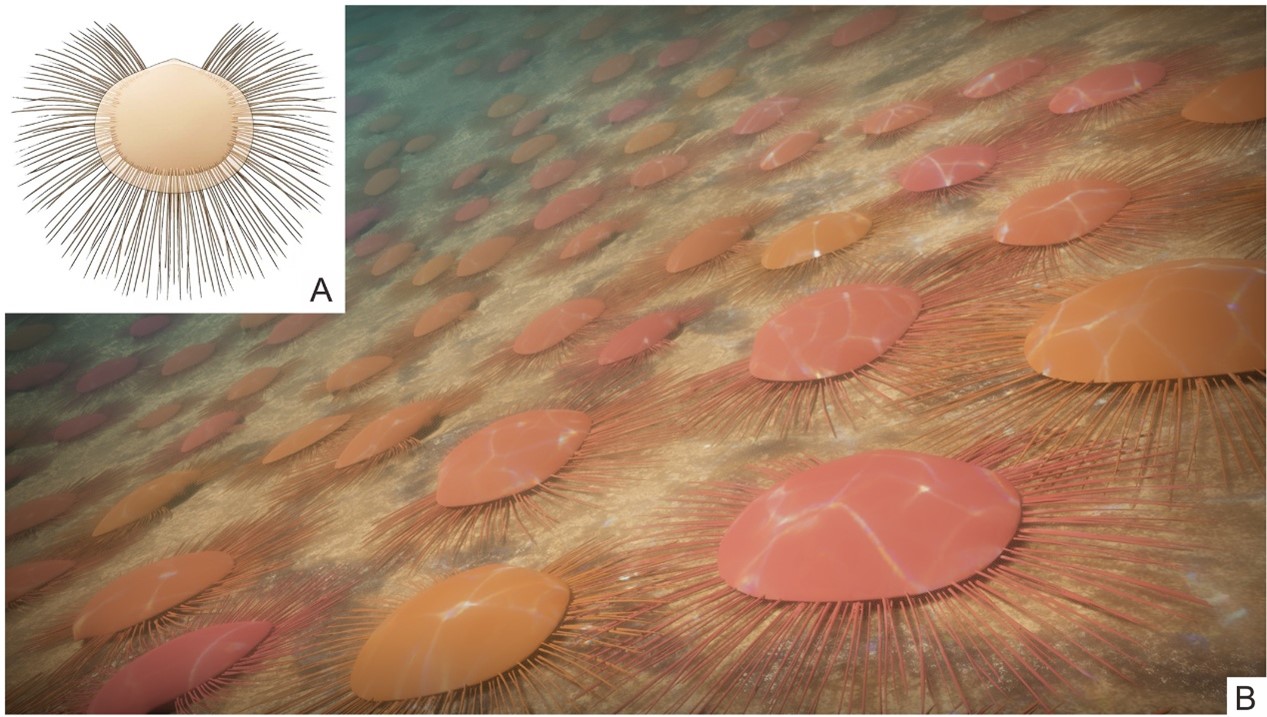Understanding how ancient species arranged themselves in space is a key puzzle in paleoecology, but direct evidence of how prehistoric organisms used their body structures to regulate spacing has long eluded scientists. Now, researchers in China have uncovered the first direct evidence: Approximately 436-million-year-old brachiopods from the early Silurian period used tiny, bristle-like structures called setae to maintain orderly, "checkerboard" spacing-ensuring they had enough room to thrive on the ancient seafloor.
The findings, published in Proceedings of the National Academy of Sciences (PNAS), come from a research team led by Prof. HUANG Bing and Prof. RONG Jiayu at the Nanjing Institute of Geology and Palaeontology of the Chinese Academy of Sciences. The researchers studied fossilized remains of Nucleospira calypta, a brachiopod species, preserved in rocks from Guizhou Province's Tongzi and Renhuai regions.
Brachiopods-shelled marine creatures once dominant in Paleozoic oceans-left behind exceptionally well-preserved fossils there, capturing not just their shells but also their delicate setae. These slender, flexible structures, found along the edge of the brachiopod's mantle, are rarely found in fossil form-especially in post-Cambrian rocks-due to their tiny size (about 20 micrometers in diameter, thinner than a human hair).
To uncover how the setae survived approximately 436 million years, the team used advanced imaging tools: scanning electron microscopy (SEM), X-ray fluorescence (XRF), and micro-CT. They found the setae were preserved through a unique process: They were first rapidly mineralized by pyrite in oxygen-free waters, then coated in calcite as ocean conditions became less acidic. This double protection shielded them from both crushing and decay, even as the pyrite later rusted into iron oxides.
With the setae's identity confirmed, the team turned to the broader population. Using spatial analysis tools-including nearest neighbor mapping and Thiessen polygons-they discovered that the brachiopods weren't scattered randomly. Instead, they formed a non-random, checkerboard-like pattern, suggesting active regulation of spacing between individuals.
The researchers found a clear mathematical relationship: The average distance between brachiopods was 1.5 to 2 times the length of their setae. How did stationary-looking creatures achieve this? Unlike some brachiopods, Nucleospira calypta lacked a stalk (or pedicle) and had a smooth, disc-shaped shell-traits that likely let them slide slowly, millimeters at a time, either pushed by weak currents or via tiny movements of their bodies. When two individuals got too close, their extended setae would touch, prompting gradual adjustments over time. The result was a stable arrangement that minimized competition-critical for filter-feeders needing space to draw in food.
"This is the first time we've directly connected a specific anatomical feature-these tiny setae-to a statistically significant spatial pattern in fossils," the researchers noted. This study offers rare evidence that ancient communities weren't just shaped by chance or environmental forces, but also by biological interactions-organisms using their bodies to carve out space.

The brachiopod Nucleospira calypta and its setae preserved as iron oxides: interior mold of the ventral valve and close-ups of setae (A-D), together with SEM images and EDS spectra (E-H). (Image by Prof. HUANG Bing)

Morphology of N. calypta setae preserved beneath the mineralized coating (A-F), their microstructure (F-H), and Micro-CT three-dimensional reconstructions (I-K). (Image by Prof. HUANG Bing)

In-situ fossil assemblage of N. calypta with XRF elemental maps (A-D), a Thiessen-polygon (Voronoi) analysis of spatial distribution (E), and an additional example of a small cluster (F). (Image by Prof. HUANG Bing)

Specimen-based reconstruction of a single N. calypta individual with marginal setae (A) and an ecological reconstruction of the living assemblage (B). (Image by Prof. HUANG Bing and TAN Chao)






